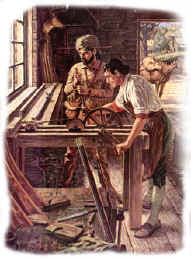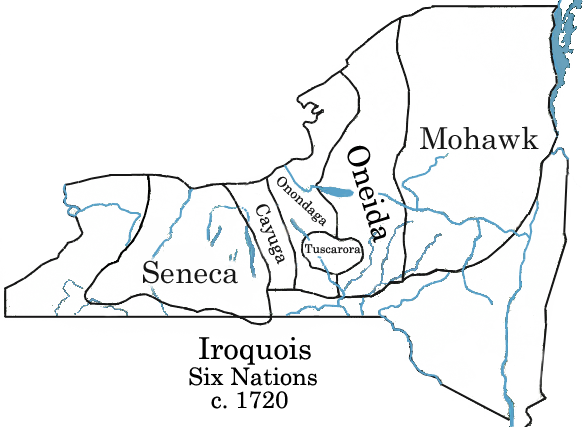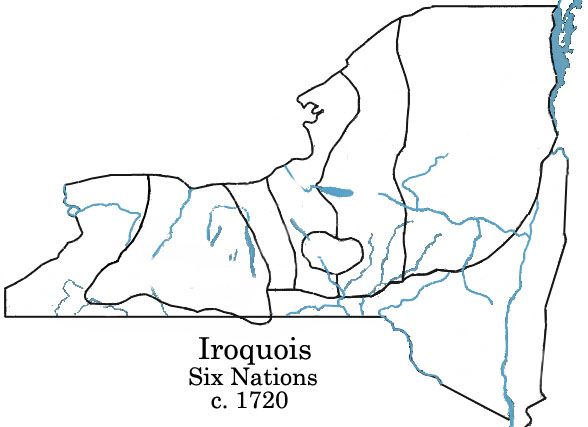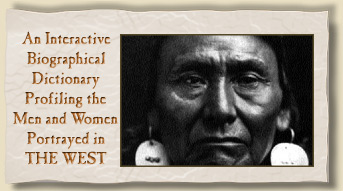- With the exception of the Tuscarora tribe, which originated in North Carolina, the Iroquois Indians were native to the New York area. Today, the largest populations of Iroquois live in Canada, New York, Oklahoma, Wisconsin and Pennsylvania.
Origins
- The Iroquois tribes speak different languages. The languages are similar enough that a common ancestry is likely. It is believed that the Iroquois Nation or Confederacy predates European colonization of America. The Tuscarora tribe joined the original five Iroquois Tribes in the 1700s as they traveled north to avoid European settlers.
First Democracy
- The Iroquois already had an established government when Europeans arrived. The Great or Grand Council was and still is pivotal in Iroquois politics. Individual tribes elect their own political leaders who represent their tribe at the Great Council. Through voting, the council meetings decide on the welfare of the entire Iroquois Nation. The Iroquois government is often called America's first democracy.
Clothing/ Fashion
- Iroquois men and women wore leggings and moccasins. The men also wore breechcloths tied around their waist. Men usually went shirtless but were known to wear long-sleeved tunics on occasion. The women wore a longer version of the tunic over their leggings. Hairstyles and tattoos for men varied by tribe and region. Some wore their hair long, decorating it with short feathered headdresses, and others wore their hair in the Mohawk fashion by shaving both sides of their scalp. Iroquois women typically wore their hair very long, only cutting it when they were in mourning.
Diet
- The Iroquois diet was very diverse, as the tribes were hunters, gatherers, fishermen and farmers. The men were the hunters, with the usual game being deer, wild birds and smaller woodlands animals. The women were the primary gatherers, supplementing their diet with roots, nuts and berries. The Iroquois also farmed native plants like beans, corn and squash. Fish were an important staple in their diet, as they usually lived near rivers and lakes

Below you will find projects created by students.
The projects will open as a PDF file.

Native Ameicans
Emily Smith
Kambree Calkins
Kayla Bezio
Krista Caward
Owen Jewell
Mikayla Klever
Erika Gould
Andrew Joshnson
Ethan Parks
Diana Nelson
Loran Barney
![]()
http://www.pbs.org/weta/thewest/people/
![]()
Click on any state on the map, or select a trail or territory to learn about cities, towns, settlements, trails, scenes of conflict, routes of commerce and natural features profiled within THE WEST.
http://www.pbs.org/weta/thewest/places/trails_ter/index.htm
![]()
Time Line - Events in the West from 1500 to 1917
http://www.pbs.org/weta/thewest/events/1500.htm
![]()
Where in "THE WEST" and Who's Who Quiz
http://www.pbs.org/weta/thewest/quizzes/where.htm
http://www.pbs.org/weta/thewest/quizzes/whoswho.htm
![]()
Buffalo - Bison
http://www.americanwest.com/critters/buffindx.htm#links
![]()
Who Were the Pioneers?

http://library.thinkquest.org/6400/who.htm
![]()
![]()
˜Haudenosaunee (Iroquois) Indian Fact Sheet
![]()
Iroquois Indian Information
The Iroquois Indians originally lived near Lake Ontario and along the Mohawk River in New York State. Around 1600, five tribes, the Mohawks, the Oneidas, the Onondagas, the Cayugas, and the Senecas, banded together to form a confederacy. A sixth tribe -- the Tuscaroras -- joined in 1722. These people called themselves "Haudenosaunee" or "people of the long house". The name "Iroquois" is a French variant on a term for "snake" given these people by the Hurons.




